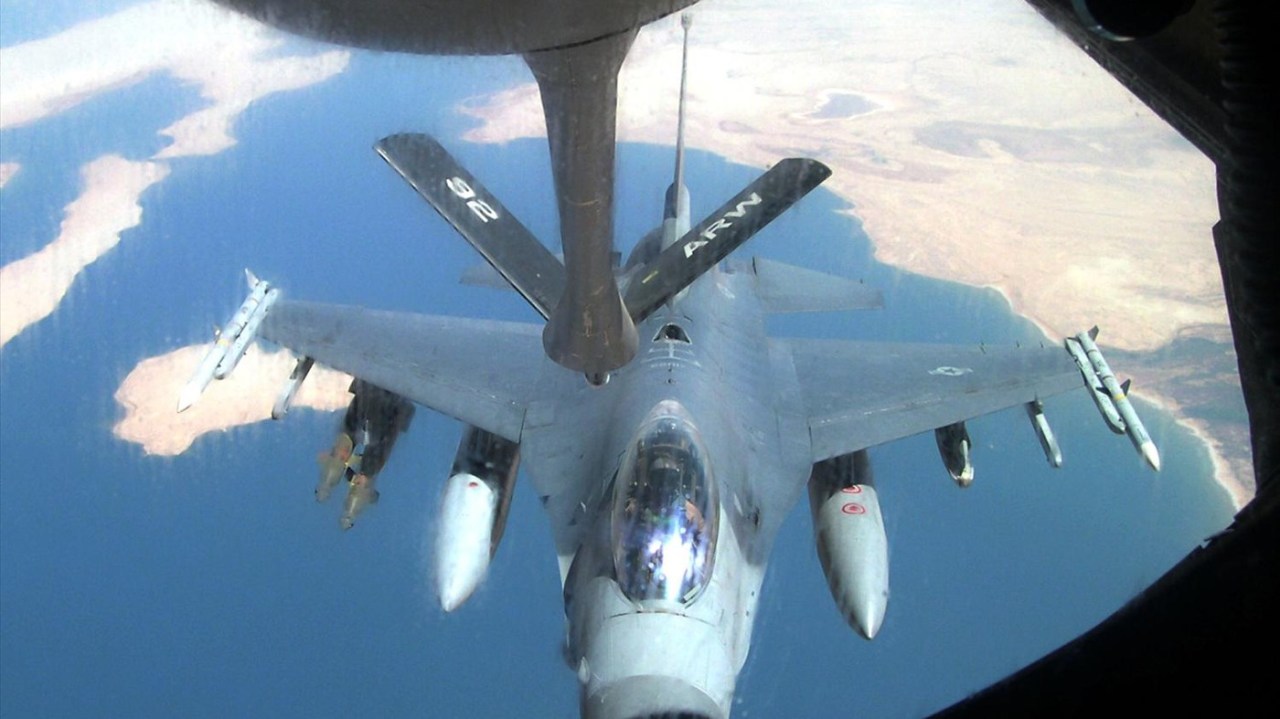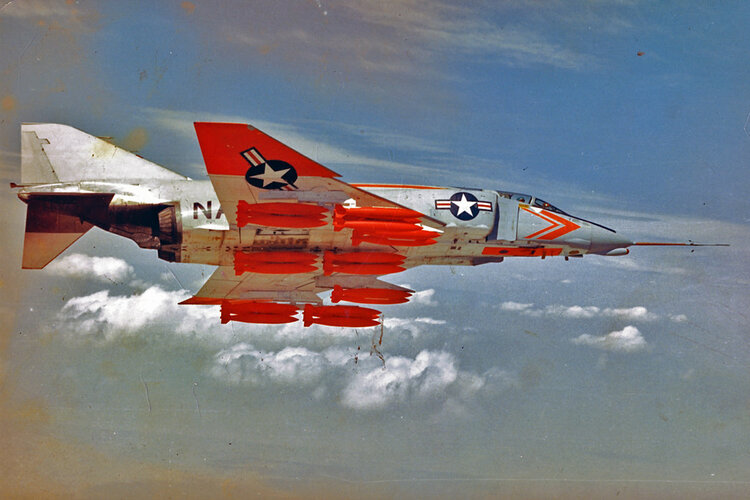AFOSR Morphing Basic Research Portfolio To Support S&T Priorities
Posted: Nov. 06, 2014
The basic science arm of the Air Force Research Laboratory is assessing its grants portfolio to see how its investments are supporting the service's five main technological thrusts, and to determine if there are opportunities for more investment in those areas while also leaving room for breakthroughs in other fields of inquiry. The Air Force's latest 30-year strategy document, published in July, lists five "game-changing technologies" that will shape the way the service conducts its operations in the future. Those technologies are hypersonics, nonotechnology, directed energy, unmanned systems and autonomy. AFRL and the wider Air Force acquisition community have made technological breakthroughs in those areas a priority. During an Oct. 30 interview, the chief scientist of the Air Force Office of Scientific Research, Charles Matson, said his organization has already begun morphing its portfolio to support that effort. Basic research is different from applied science and advanced technology development programs in that experimentation is pursued without a specific application or product in mind. However, breakthroughs and discoveries at the basic level enable future technological advancement.
AFOSR, headquartered in Arlington, VA, funds basic-level scientific experiments and research projects through the award of grants and contracts to academic institutions, commercial firms and internally within AFRL. The portfolio is divided into about 40 areas such as "aerospace materials for extreme environments" and "ultrashort pulse laser-matter interactions." Work from those areas flows into applied research projects being conducted by AFRL's technical directorates and elsewhere within the the Defense Department. "We are looking over our portfolio and seeing if in the context of these recently-provided areas of breakthrough technologies, what our investments are in, and if we should increase our investments," Matson said. The five game-changing technologies identified by the Air Force are not exclusive areas of research, but they are areas the service wants to emphasis, he noted. According to the July strategy document, those five areas of technology have the potential to "amplify" the speed, range, flexibility and precision of Air Force weapon systems. Taking the pilot out of the cockpit, for example, reduces the size, cost and complexity of an aircraft, leading to the development of cheaper and more expendable platforms that can "swarm, suppress, deceive or destroy," the document states. Furthermore, a hypersonic strike weapon could destroy a target anywhere in the world within hours or even minutes and it would be too fast to intercept. AFOSR's eclectic portfolio of grants and contracts already support a range of basic-level research initiatives relevant to those five "game-changing" areas, but there is interest in making further investments. Matson pointed to two examples of where the organization plans to do more.
One is related to autonomy and unmanned systems. Matson said scientists are interested in studying control theory and other areas of mathematics and engineering to support the development of unmanned aircraft that can communicate with each other and swarm. He said applications could include the fielding of cheaper and more autonomous platforms that are more expendable than an F-22 or F-35, for example. "To do that you have to figure out how to get these autonomous aircraft to be able to communicate with each other and work with each other," Matson said. "I see us moving into doing more investment into that area -- so control theory as well as many other aspects." AFOSR currently supports research into "computational and machine intelligence" and "dynamics and control," which both have application for unmanned systems and autonomy. The second example is within the realm of big-data computing through the development of super-fast gigahertz and terahertz processors. Matson said the Air Force has a requirement to process large amounts of intelligence data as more and more sensors are fielded in order to reduce the amount of back-end processing and exploitation work. He said AFOSR is being "very judicious" in the way it invests in this area because companies such as Google and Microsoft are already spending vast amounts of money conducting their own research. "We as the Air Force don't want to unnecessarily duplicate anyone else's research," he said. "We want to break new ground. We want to know what's already being done and what's unique to the Air Force's needs." Internationally, AFOSR is looking to build on domestic research into quantum computing and quantum physics by leveraging the United Kingdom's investment in that area. During a separate interview on Oct. 31, Col. Timothy Lawrence, commander of AFSOR's international branch in London, said the U.K. is pumping millions of dollars into quantum research for a variety of applications that are relevant to the Air Force.
"They're looking at quantum sensors and quantum precision, navigation and timing," he said. "Everyone in the U.S. right now says let's get that quantum computer which will, in theory, process data faster than the human mind. Then if we get that, there's all sorts of applications to build on. They're saying, 'Since the U.S. has decided they're going to build the quantum computer, we'll look at quantum in other areas.' That's why we're here, to leverage those investments and work with them at the ground level, so if there are breakthroughs here we can leverage that to build an Air Force product."
Funding research
The Pentagon's fiscal year 2015 budget request includes $11.5 billion for science and technology, which is divided between investments in basic research, applied research and advanced technology development. According to Air Force budget documents, the service received $460 million for basic research in FY-13, $525 million in FY-14, and $454 million has been requested for this fiscal year. AFOSR is responsible for executing the majority of those funds to support Air Force needs. It also receives about $120 million devolved from the Office of the Secretary of Defense. The directorate releases an annual broad agency announcement outlining its research priorities for the year. Matson said the announcement is the process through which researchers can apply for grants, but AFOSR also actively seeks out opportunities. "We don't just sit back and wait for proposals to come in," he said. "We go out to conferences, universities, scour through literature, and we seek the opportunities, so even if people don't see our BAA, we become aware of what's great out there and we will invite them to submit against the BAA so we can get the great research.
"We're different from, say, the National Science Foundation in that we're a mission organization, so we seek to find the best science that's out there that has relevance or potential relevance to future Air Force needs or capabilities," he explained. "That means we keep an eye on the needs of the Air Force and we factor those in." About 30 percent of the grants support internal AFRL research efforts and about 70 percent support research being conducted by universities and industry. Matson said the BAA changes from year to year but the overarching themes and titles evolve slowly. "Although you'll get new and exciting things popping up, it morphs fairly slowly," he explained.
Transitioning to applied science
AFOSR's primary mission is to find and fund the best research globally, and then transition breakthrough technologies from those investments to applied research and advanced technology development programs. Because the Air Force wants to use the research to solve real-world problems, scientists often see their research evolve into a functional system or platform, Matson said. "We strongly work to transition the results that are successful, and by transition we mean move to the other AFRL technical directorates and integrate them into the applied research efforts or developmental efforts," he said. "We don't just do it cold. We involve the technical directorates from the get-go. We involve them in program reviews, looking at proposals -- it's one big team working together so when great results come out of this basic research effort, you already have people ready to take it to the next steps." Matson discussed two promising areas of research that have important applications for the Air Force. One is the study of ultracold atoms, which scientists can use to create very precise clocks. "So if you need to have a very accurate time reference and you don't have GPS available, something like that would give you an orders-of-magnitude improvement in stability than what we currently have," he said. The same process is applied to molecules to allow new and interesting types of experiments in the laboratory, he added. Additionally, scientists funded by AFOSR are developing so-called attosecond and femtosecond laser sources -- basically pulse lasers with ultrashort wavelengths. Matson said scientists are using the lasers to probe chemistry processes in experiments. "You can start looking at the electronic behaviors, not just the chemical behaviors -- so that's some very exciting stuff we're getting into," Matson said. Stressing the importance of continued investment in science and technology, Matson said: "Revolutionary S&T is the key ingredient for revolutionary breakthroughs that are necessary to ensure our security and wellbeing in the future." -- James Drew




